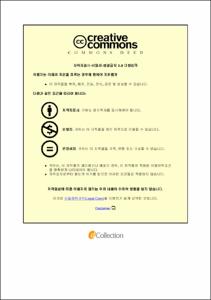전기자동차 리튬배터리용 리튬인산철 양극활물질로부터 선택적 리튬 회수 및 고순도 탄산리튬 제조 연구
- Abstract
- This study was conducted with the aim of selectively leaching and recovering lithium from spent LFP (LiFePO4) and LMFP (LiMnFePO4), a cathode active material of lithium-ion batteries, using a sulfuric acid solution. The lithium recovery rate according to conditions such as the solid-liquid ratio of sulfuric acid solution and LFP powder, the stirring time, and valuable components concentration in sulfuric acid was investigated. Under each experimental condition, lithium was selectively recovered, and the following optimal process conditions were derived as a result of the experiment. Under the following experimental conditions: the sulfuric acid solution concentration of 2M H2SO4, the stirring time of 60 min, and the weight ratio of 1:5, lithium sulfate excluding impurities was selectively recovered and the Li content in lithium sulfate solution of 403.2mg/L, and the Li recovery rate of 99.79% were achieved.
- Issued Date
- 2022
- Awarded Date
- 2022. 2
- Type
- Dissertation
- Publisher
- 부경대학교
- Affiliation
- 부경대학교 대학원
- Department
- 대학원 금속공학과
- Advisor
- 왕제필
- Table Of Contents
- 제1장 연구 배경 및 필요성 1
제2장 이론적 배경 7
2.1 전기자동차의 개요 7
2.2 이차전지의 개요 11
2.2.1 이차전지의 종류 11
2.2.2 이차전지 개요 및 원리 14
2.2.3 리튬 이차전지의 시장 동향 20
2.2.4 리튬 이차전지의 용도별 시장 동향 24
2.2.4.1 IT기기용 리튬 이차전지 세계시장 전망 26
2.2.4.2 전기자동차용 리튬 이차전지 세계시장 전망 28
2.2.4.3 에너지저장장치용 리튬 이차전지 세계시장 전망 30
2.2.5 리튬 이차전지의 구성 32
2.3 리튬이차전지의 양극활물질 34
2.3.1 리튬이차전지의 양극활물질의 종류 및 특성 34
2.3.1.1 LiCoO2의 특징 37
2.3.1.2 Li(NixCoyMnz)O2의 특징 39
2.3.1.3 LiNiO2의 특징 41
2.3.1.4 LiMn2O4의 특징 43
2.3.1.5 LiFePO4의 특징 44
2.4 리튬 이차전지의 회수 및 재생기술 동향 45
2.4.1 물리적 공정 48
2.4.1.1 기계적 분리 공정 50
2.4.1.2 열처리 공정 50
2.4.1.3 기계화학적 공정 50
2.4.1.4 용해 공정 51
2.4.2 화학적 공정 52
2.4.2.1 용해 공정 54
2.4.2.2 산 용출 공정 54
2.4.2.3 생물적 용출 공정 54
2.4.2.4 용매 추출 공정 55
2.4.2.5 화학 침전 공정 55
2.4.2.6 전기화학 공정 55
2.4.3 리튬 이차전지의 재활용 기술동향 56
2.4.4 리튬 이차전지의 재활용 연구동향 61
2.4.5 리튬 이차전지의 재활용 특허동향 64
제3장 실험재료 및 방법 74
3.1 실험재료 74
3.2 실험 방법 76
3.2.1 Leaching(침출) 76
3.2.2 열중량분석 80
3.2.3 Carbonation(CO2 열반응) 83
3.2.4 수침출 실험 88
제4장 실험결과 90
4.1 황산 첨가를 통한 Li2SO4 변환 90
4.1.1 황산 용액의 몰농도 변화에 따른 영향 90
4.1.2 교반 시간에 대한 영향 94
4.1.3 고액비에 대한 영향 98
4.1.4 최적의 황산 반응 공정 102
4.2 Carbonation을 통한 Li2CO3 제조 105
4.2.1 Li2SO4의 열반응 TGA 분석결과 105
4.2.2 Carbonation(CO2 열반응) 실험결과 109
4.2.2.1 온도에 따른 영향 109
4.2.2.2 시간에 따른 영향 111
4.2.2.3 Carbon 함량에 따른 영향 113
4.2.2.4 가스 유량에 따른 영향 115
4.2.3 최적의 Carbonation(CO2 열반응) 공정 117
4.3 수침출 실험 121
4.3.1 수침출 시간에 따른 리튬 함유량 분석 121
4.3.2 증류수 비율에 따른 리튬 함유량 분석 121
제5장 결론 123
5.1 황산 반응 123
5.2 Carbonation(CO2 열반응) 124
5.3 수침출 125
참고문헌 126
- Degree
- Doctor
- Files in This Item:
-
-
Download
 전기자동차 리튬배터리용 리튬인산철 양극활물질로부터 선택적 리튬 회수 및 고순도 탄산리튬 제조 연구.pdf
기타 데이터 / 2.84 MB / Adobe PDF
전기자동차 리튬배터리용 리튬인산철 양극활물질로부터 선택적 리튬 회수 및 고순도 탄산리튬 제조 연구.pdf
기타 데이터 / 2.84 MB / Adobe PDF
-
Items in Repository are protected by copyright, with all rights reserved, unless otherwise indicated.